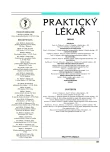Q fever: properties of the agent
Authors:
M. Votava
Authors‘ workplace:
Mikrobiologický ústav LF MU a FN u svaté Anny v Brně
přednosta prof. MUDr. M. Votava, CSc.
Published in:
Prakt. Lék. 2005; 85(7): 385-387
Category:
Reviews
Overview
The agent of Q fever, Coxiella burnetii, is a minute pleomorphic gram-negative coccobacillus. It belongs to the most resistant bacteria and is namely resistant to desiccation. It can therefore become a dangerous biological weapon. It propagates intracellularly only, namely in the phagolysosomes. There has been described a developmental cycle in coxiellae, that includes macrocellular and microcellular forms and the formation of spore-like bodies. In the laboratory, coxiellae can be propagated in the yolk sac of chick embryos, in cell cultures, and in experimental animals, however, those procedures involve a great risk of laboratory infection. By passaging in the laboratory the virulent antigenic phase I passes to phase II which corresponds roughly to the R-phase in common bacteria. Acute infection mostly takes the course of atypical pneumonia, a flu-like affection, hepatitis, or chronic endocarditis. Q fever is a typical zoonosis, mostly profession-linked, the respiratory tract being the chief portal of entry. The remedy of choice are broad-spectrum antibiotics. Routine laboratory diagnostics is based on the presence of antibodies, more recently direct demonstration by the polymerase chain reaction has been recommended.
Key words:
Coxiella burnetii – Q fever – microbiology.
Labels
General practitioner for children and adolescents General practitioner for adultsArticle was published in
General Practitioner

2005 Issue 7
Most read in this issue
- Lemierr’s syndrome
- Horner’s syndrom: Topical diagnostics of the causative lesion (three case reports)
- Q fever: properties of the agent
- Q fever – clinical picture
